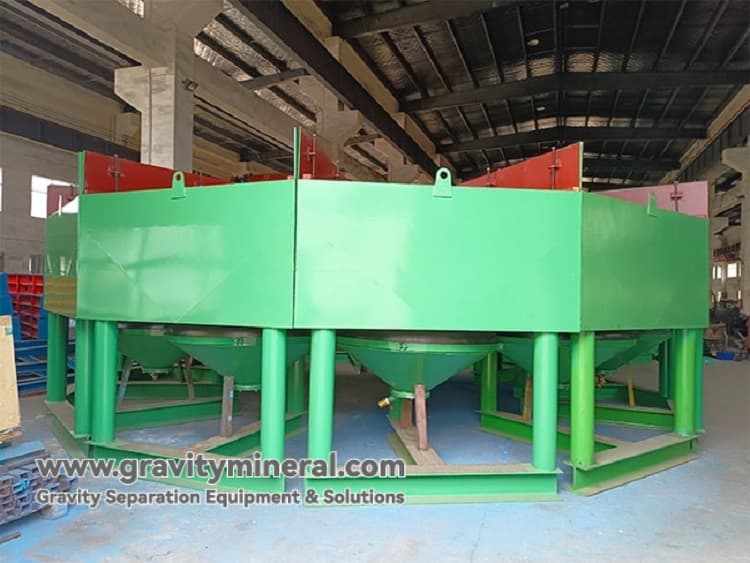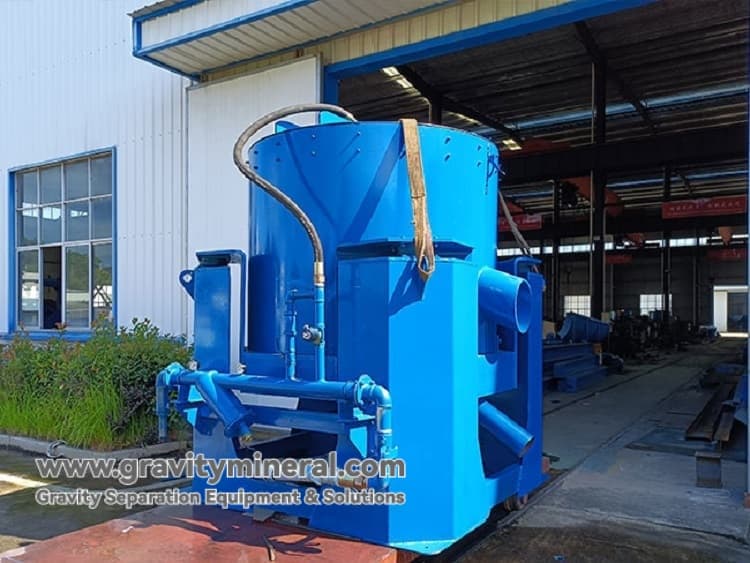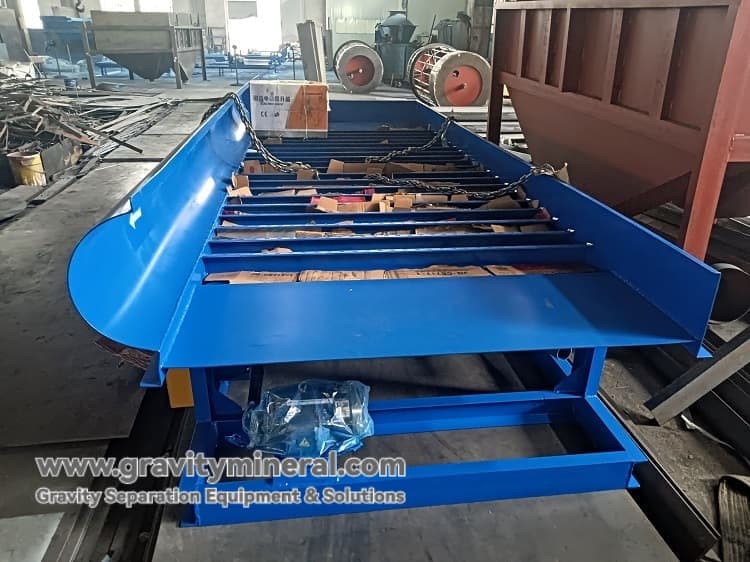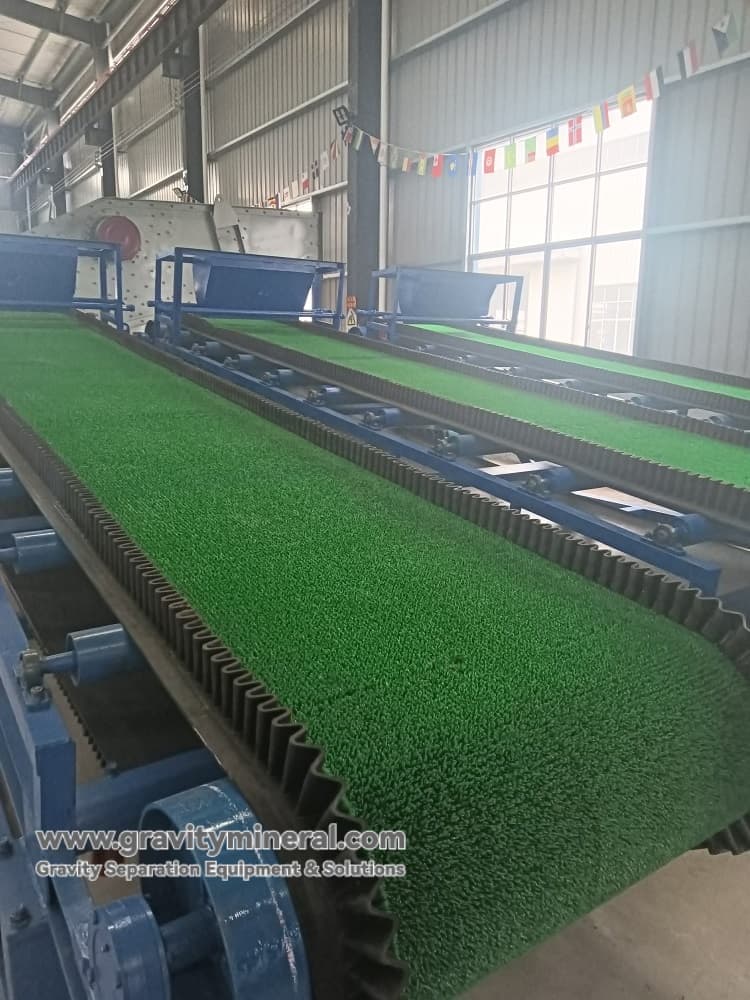What are the gravity separation equipment?
What are the gravity separation equipment? -- Uncover the core equipment and its applicable scenarios
In the field of mineral processing, gravity beneficiation is favored for its low cost, high efficiency and no chemical pollution. And the success of gravity beneficiation greatly depends on choosing the right gravity beneficiation equipment. These equipments utilize the density difference between minerals to achieve efficient separation in the medium (water or air).
In this article, we will systematically sort out the mainstream gravity separation equipment to help you make the best choice according to the characteristics of the ore.
First, the core principle of gravity separation and equipment classification
Core principle: all gravity separation equipment is based on a simple law of nature - in the fluid medium, the density of the mineral particles settling speed, tend to be distributed in the bottom or a specific area; density of the mineral particles are brought to the media on the upper layer or another area, so as to realize the separation.
According to the separation principle and structure of different, mainstream gravity separation equipment can be divided into the following categories:
Second, the mainstream gravity separation equipment in detail
1. jigger
-
Working principle: the use of vertical alternating pulse movement of the water flow, so that the bed (mineral particle layer) loose, stratification. Heavy minerals sink to the bottom layer, light minerals are located in the upper layer, and then discharged separately through a special discharge device.
-
Applicable particle size: coarse and medium-grained materials (usually ranging from 0.5-50mm, or even coarser).
-
Main features:
-
Large processing capacity and high sorting efficiency.
-
Rough concentrate and final concentrate can be obtained.
-
Relatively simple operation and maintenance.
-
-
Typical applications: roughing of tungsten and tin ores; washing of alluvial gold ores; sorting of hematite and manganese ores; coal sorting and solid waste recovery.
2. Spiral chute
-
Working principle: the slurry is fed from the top of the spiral chute, and in the downward flow along the spiral chute, the mineral particles are affected by gravity, centrifugal force, friction and the combined effect of the water film force. Heavy mineral particles tend to flow to the inner edge, light minerals tend to the outer edge, so that the inner and outer edges of the interceptor, separated from the concentrate, the middle ore and tailings.
-
Applicable particle size: fine-grained materials (usually ranging from 0.03-1mm).
-
Main features:
-
No power required, simple structure, very low energy consumption.
-
Large processing capacity, small footprint.
-
Easy operation and low maintenance cost.
-
-
Typical applications: beach sand ore (ilmenite, zircon, rutile); fine-grained iron ore; pre-selection of tungsten and tin ore mud.

3. Shaking table
-
Working principle: With the combined effect of asymmetric reciprocating motion of bed surface and water flushing, the ore particles are stratified and divided into zones according to density and particle size in the grooves of bed strips. Heavy minerals by the friction of the bed surface thrust, along the bed surface of the longitudinal movement; light minerals by the water flow transverse flushing. Eventually form concentrate, middle ore and tailing zone.
-
Applicable particle size: fine-grained, micro-fine-grained materials (usually ranging from 0.02-2mm).
-
Main features:
-
Extremely high sorting precision and high enrichment ratio.
-
A variety of products of different grades can be produced at the same time.
-
Disadvantages are lower processing capacity and large floor space.
-
-
Typical application: used as a sorting equipment for obtaining high grade concentrate. Widely used in the selection of tungsten, tin, tantalum, niobium, gold and other precious and rare metals.
4. Centrifugal concentrator
-
Working Principle: Through the high-speed rotation of the drum, it generates a powerful centrifugal force field, which simulates and amplifies the gravity field, greatly accelerating the settling speed of the micro-fine grained heavy minerals, thus realizing the efficient recovery of micro-fine grained materials that are difficult to be effectively sorted by the conventional gravity equipment.
-
Applicable particle size: micro-fine-grained materials (usually less than 0.1mm).
-
Main features:
-
The recovery rate of micro-fine-grained minerals is significantly higher than that of conventional equipment.
-
Compact equipment, high degree of automation.
-
It is the core equipment of modern fine gravity separation.
-
-
Typical applications: recovery of fine-grained and micro-fine-grained alluvial gold (e.g. Nelson concentrator); separation of cassiterite and wolframite fine mud; recovery of valuable components from old tailings ponds.
5. Chute
-
Working principle: the slurry flows in the inclined chute body, heavy minerals in the bottom of the chute rough surface or baffle effect of settlement, retention, light minerals are taken away by the water flow. It is one of the simplest gravity separation equipment.
-
Applicable particle size: a wide range, from coarse to fine grains.
-
Main features: extremely simple structure, low cost, but the recovery rate is relatively low, often need to be manually panned.
-
Typical applications: roughing of alluvial gold (such as drumming chute ), artificial gold grass, etc..

Third, how to choose the right gravity separation equipment?
Choosing the right equipment is the key to success. The main considerations are as follows:
-
Mineral particle size: this is the primary factor.
-
Coarse grain (>0.5mm): give priority to jigger.
-
Medium to fine grains (0.1mm-2mm):spiral chute and shaker are the mainstream choices.
-
Micro-fine grains (<0.1mm):centrifugal concentrator must be used.
-
-
Mineral density difference: the greater the density difference, the easier the sorting, the wider the choice of equipment.
-
Processing capacity requirements: large-scale processing can choose jigger or spiral chute; high-precision small batch selection with shaking table.
-
Investment and operation cost: spiral chute has the lowest operation cost; centrifugal concentrator has relatively high investment and operation cost.
Important advice: The best solution is determined by ore selectivity tests. We provide laboratory grade ore dressing tests on incoming samples to recommend the most economical and efficient equipment configuration for you.
Choose us to power your beneficiation plant!
We offer turnkey solutions from a single gravity concentrator to a complete gravity concentrator line. Whether it is the classic jigger, spiral chute, or high efficiency centrifuge, we can provide you with stable performance, excellent quality products and professional technical support.
Contact us now for free technical consultation and equipment quotation! Let our professional experience help you maximize the value of your resources!

